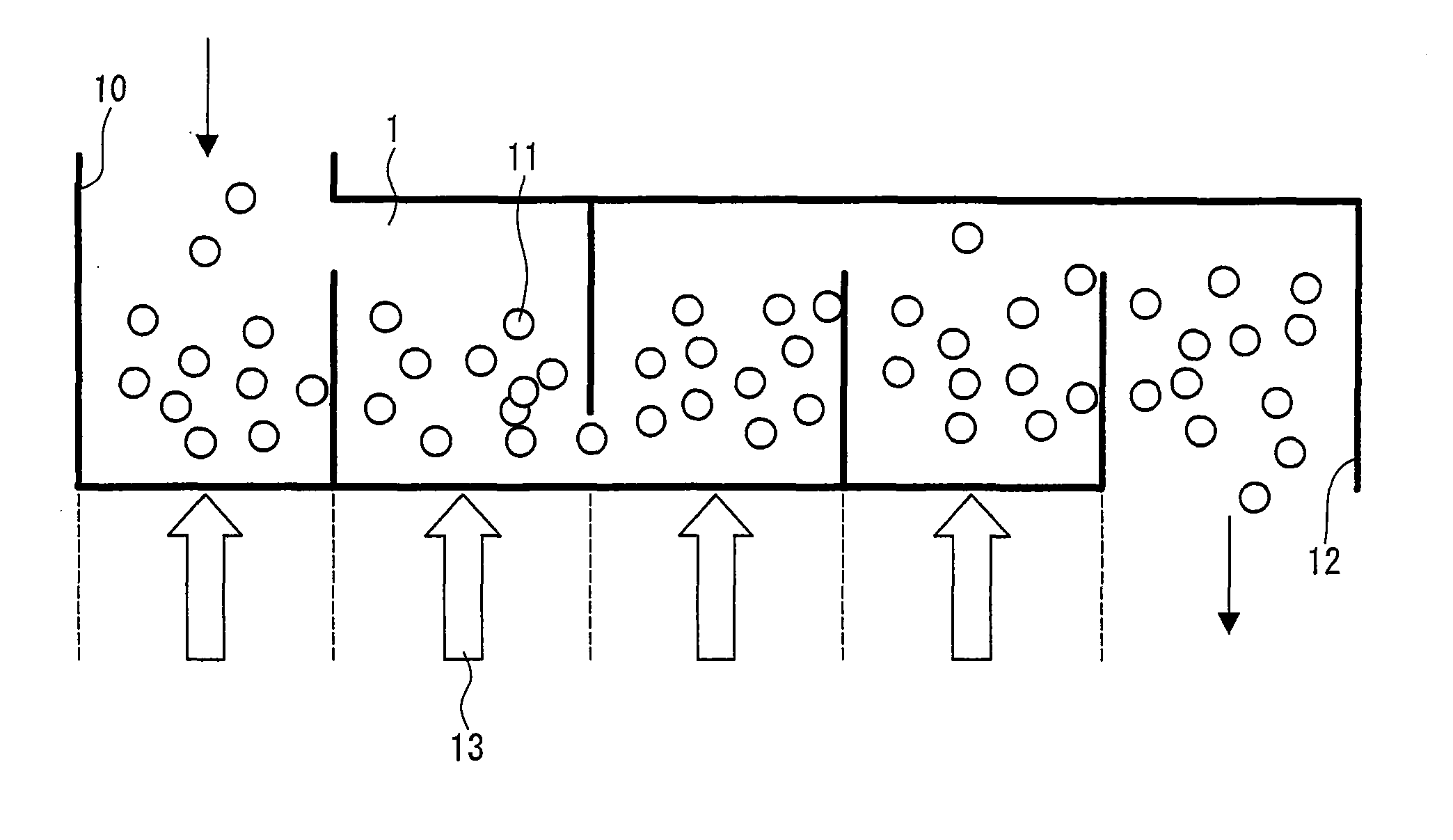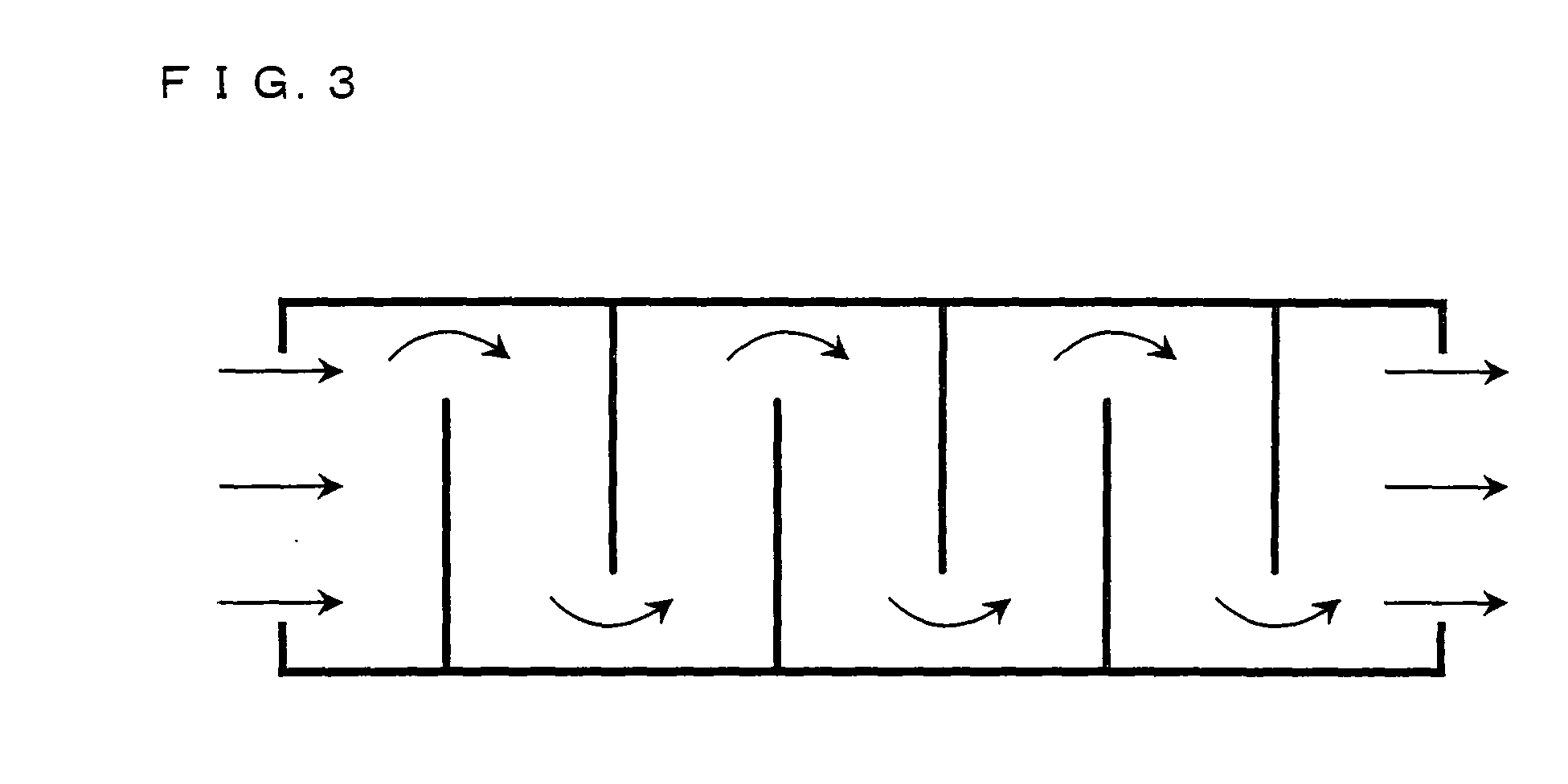Process for producing water-absorbing resin
a technology of water-absorbing resin and process, which is applied in the direction of drying, furniture, lighting and heating equipment, etc., can solve the problems of increasing the size of the dryer, increasing the cost of water-absorbing resin production, and low drying efficiency, and achieves low cost and high productivity
- Summary
- Abstract
- Description
- Claims
- Application Information
AI Technical Summary
Benefits of technology
Problems solved by technology
Method used
Image
Examples
embodiment 1
[0099]One embodiment of the present invention will be described below.
[0100](I) Particulate Water Absorbent Resin
[0101](A) Polyacrylate Salt Water Absorbent Resin
[0102]A water absorbent resin that is obtained by a method of the present invention for producing a water absorbent resin can be widely applied to various polymer structures, but is optimally a polyacrylate salt water absorbent resin, or preferably a water-swelling and water-insoluble cross-linked polymer containing an acrylic acid (salt) at 30 mol % to 100 mol %, more preferably 50 mol % to 100 mol %, still more preferably 70 mol % to 100 mol %, or especially preferably 90 mol % to 100 mol %, out of the recurring units (exclusive of the cross-linking agent). The term “water-swelling” here means that the after-mentioned absorption capacity (GV) is not less than 5 g / g, or more preferably not less than 10 g / g. Further, the term “water-insoluble” here means that the after-mentioned water-soluble component occupies not more tha...
embodiment 2
[0201]Another embodiment of the present invention is described below. A typical method for producing a water absorbent resin is described below in sections (1) to (5). A cross-linking method is described in section (7). The “step of further performing second drying on particle-size-controlled water absorbent resin powder” and the “moisture content of a water absorbent resin to be subjected to the surface cross-linking step (5)”, which are features of the present invention, are described in section (6) and subsections (6-1) and (6-2). These steps may constitute a batch of steps or a series of steps. However, industrially, it is preferable that these steps be dealt with one after another for continuous production as a whole.
[0202](I) Particulate Water Absorbent Resin
[0203](1) Polyacrylate Salt Water Absorbent Resin
[0204]A water absorbent resin that is obtained by a method of the present invention for producing a water absorbent resin can be widely applied to various polymer structures...
examples
[0296]In the following, the present invention will be described more specifically by way of an Example of Production, Examples, and Comparative Examples. However, the present invention is not limited to these Examples. An example based on a proper combination of technical means disclosed in different examples is encompassed in the technical scope of the present invention.
[0297]All the electrical apparatuses for use in Examples operated at 200 V or 100 V unless otherwise specified. Furthermore, the water absorbent resin was used at 25±2° C. and at 50% RH unless otherwise specified. The following measuring methods and the reagents and apparatuses exemplified in Examples and Comparative Examples may be appropriately substituted by equivalents.
[0298][Methods for Measuring the Properties]
[0299]
[0300]The swelling pressure of a gel layer was measured in the following manner with use of a digital force gage (marketed as “Accuforce Cadnet Force Gage X5931C”; manufactured by AMETEK Co.). A pa...
PUM
| Property | Measurement | Unit |
|---|---|---|
| Temperature | aaaaa | aaaaa |
| Temperature | aaaaa | aaaaa |
| Temperature | aaaaa | aaaaa |
Abstract
Description
Claims
Application Information
 Login to View More
Login to View More - R&D
- Intellectual Property
- Life Sciences
- Materials
- Tech Scout
- Unparalleled Data Quality
- Higher Quality Content
- 60% Fewer Hallucinations
Browse by: Latest US Patents, China's latest patents, Technical Efficacy Thesaurus, Application Domain, Technology Topic, Popular Technical Reports.
© 2025 PatSnap. All rights reserved.Legal|Privacy policy|Modern Slavery Act Transparency Statement|Sitemap|About US| Contact US: help@patsnap.com



